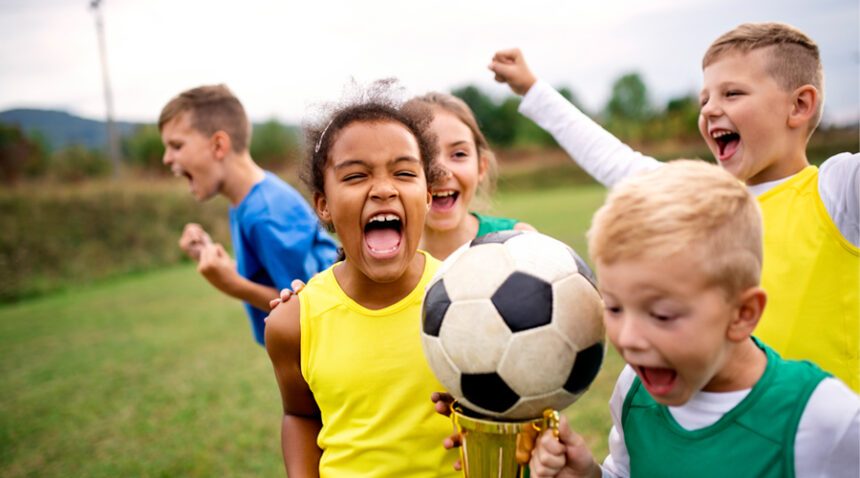Editor’s note: This article originally ran September 3, 2019, and was updated October 18, 2024.
As a parent of a student athlete, you have to think about a lot: Getting them to practices and games. Buying the right equipment. Making sure they eat and sleep well.
And, of course, preventing injury.
Millions of kids are sidelined by sports injuries every year. But there are steps your young athlete can take to help avoid them.
UNC physical therapist Jeff O’Laughlin, PT, DPT, offers these five tips for youth sports injury prevention.
1. Avoid early sports specialization.
While you may feel pressure to keep your star athlete playing their favorite sport year-round to stay at the top of their game, Dr. O’Laughlin says early sports specialization greatly increases the chances of injury.
“If you specialize early in a sport and don’t allow for proper rest and recovery, especially in the offseason, it can increase your risk for an overuse injury,” Dr. O’Laughlin says.
As opposed to playing the same sport all year, getting involved in other activities during the offseason can reduce the risk of overuse and repetitive strain injuries.
And if your athlete does play one sport a lot, “be aware of the signs of overuse injuries, such as pain that persists after activity or gradually worsens,” Dr. O’Laughlin says. “Early detection is key to preventing more serious issues.”
2. Be careful during practice.
Athletes don’t just get hurt during games. Practice is a risky time too. That’s why your child should take the same safety measures and wear the same protective gear as they would in a game. Make sure your child is warming up and cooling down to keep muscles limber.
And if they do get hurt during a scrimmage, encourage your child to talk to his or her coach, who should put your athlete’s health first.
“We need to teach young athletes to listen to their bodies and rest if they experience pain or discomfort,” Dr. O’Laughlin says. “‘No pain, no gain’ is not the correct mindset.”
3. Think about their whole health.
Many factors go into injury prevention for young athletes. You’ll want to make sure your child is getting adequate sleep, staying hydrated and eating a balanced diet.
“Proper nutrition is critical for recovery and overall athletic performance,” Dr. O’Laughlin says.
Consider your child’s mental health, especially while playing sports.
“Mental stress can contribute to physical injuries,” Dr. O’Laughlin says. “Encourage a positive and supportive atmosphere and address any psychological pressures young athletes may face.”
4. If your child is hurt, see an expert.
If your child gets hurt, see a specialist who can help you determine the best way to treat the injury. Start with their doctor, who may refer you to an orthopedic surgeon, sports medicine doctor or physical therapist.
“If your child has an injury, we would rather see them a couple of times and teach them what they’re supposed to do rather than waiting for it to become something more serious because they did not seek treatment around the time of injury,” Dr. O’Laughlin says.
5. Give time to heal after an injury.
Similarly, if children hurry back to a sport without giving their bodies time to fully heal, they risk serious or even permanent injury.
“If you rush back too soon, you risk reinjury or making the injury worse, and then you have to start your recovery all over again,” Dr. O’Laughlin says. “Proper recovery, rest and healing is the best bet to get back to what you enjoy.”
If you have questions about your child’s health, ask their doctor or find one near you.

